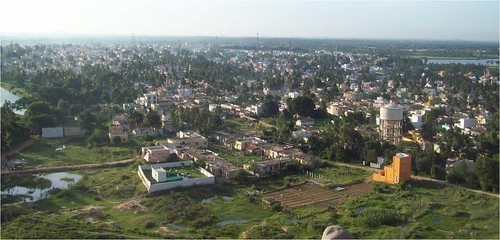/topics/urban-sanitation
Urban Sanitation
How have Indias flagship development programmes fared Budget briefs on the TSC JNNURM and MGNREGS by the Accountability Initiative
Posted on 22 Nov, 2014 10:30 AMGovernment of India’s development programmes are aimed to bring in much required inclusive development and pave a way towards an equitable and socially just society. With this motive the Centre had introduced several programmes in social sectors and allocated a fixed amount for achieving the set goals.
An analysis on the performance of the programmes shows how far the targets have been achieved, the shortcomings and the steps that are to be taken to strengthen the programmes.

An evaluative study on the informal water distribution system in Kaula Bandar slum in Mumbai: A paper in BioMed Central Public Health Journal
Posted on 22 Nov, 2014 10:30 AMAs a result of rapid urbanisation, majority of migrated population is forced to settle in places which are not legally recognised by state authorities. These areas thus lack in basic services like water supply and sewerage. Consequently, the slum dwellers often resort to illegal methods to avail these services.
Toilets in the making: Delhi Urban Art Commission DUAC designs eco friendly and low cost public toilets for Delhi
Posted on 22 Nov, 2014 10:30 AM

Strategies for achieving environmental sustainability in rural development A report by United Nations Development Programme
Posted on 22 Nov, 2014 10:30 AMThis report by the United Nations Development Programme (UNDP) presents strategies for inclusive rural development embodying the principles of environmental sustainability. It recommends measures needed to achieve green, including measuring and tracking, the use incentives and the building of capacities. It also contains a number of case studies showing how green results can be achieved.
Assessing the land use change and its impact on water resources: A study on the Mula and Mutha rivers catchment area in Pune
Posted on 22 Nov, 2014 10:30 AMLand use changes hydrologic system and have potentially large impacts on water resources. An assessment in an area with seasonally limited water availability and which is subject to rapid socio- economic development and population growth will provide an exemplary view on the local impacts of major recent developments in India. In this backdrop this paper analyzes past land use changes between 1989 and 2009 and their impacts on the water balance in the Mula and Mutha Rivers catchment upstream of Pune. The aim of the paper is:
- assess the land use changes between 1989/1990 and 2009/2010
- analyze the impacts of these changes on the long-term water balance components in the Mula and Mutha Rivers catchment upstream of the city of Pune.
Influence of anthropogenic contamination on fluoride concentration in groundwater: A study of Mulbagal town Kolar district Karnataka
Posted on 22 Nov, 2014 10:30 AMGroundwater contamination is a serious, but relatively ignored issue in the country. This contamination occurs in either through geogenic or anthropogenic means. Fluoride contamination is one such example of geogenic contamination that is widely found in the Kolar district of Karnataka. However, the fluoride levels in the town of Mulbagal are lower than those in the surroundings. Earlier, a study was conducted on the impact of pit toilets on the groundwater in the area. The present paper investigates the presence of any link between these two phenomena.
Handbook for flood protection antierosion and river training works by Central Water Commission 2012
Posted on 22 Nov, 2014 10:30 AMThis handbook by Central Water Commission aims to provide necessary guidance to the field engineers in the state and central for design, appraisal, construction and monitoring of the flood management works covering all the relevant BIS codes, design manuals, guidelines, technical specifications for construction materials and practices etc. to meet new challenges in the flood management in India.
Guidelines on the integrated low cost sanitation scheme by Ministry of Housing and Urban Poverty Alleviation 2012
Posted on 22 Nov, 2014 10:30 AMThis document by Ministry of Housing and Urban Poverty Alleviation provides guidelines for the low cost sanitation scheme. The main objective of the scheme is to convert the existing dry latrines into low cost flush latrines and to construct new ones.
Analysis of Delhi's budgetary allocations for water and sanitation services in slum areas Article in Economic and Political Weekly
Posted on 22 Nov, 2014 10:30 AMThis article in Economic and Political Weekly, by analysing various budget documents, attempts to capture the quantum of budgetary outlay for Water and Sanitation Services (WSS) in the slums of Bawana and Bhalaswa in Delhi. Further it captures various systemic weaknesses that impede the effective delivery of WSS in these two slum areas.
A communication and advocacy strategy framework for sanitation and hygiene by the Ministry of Drinking Water and Sanitation and UNICEF 2012-17
Posted on 22 Nov, 2014 10:30 AMThe number people practicing open defecation in India is more than 600 million. Though the access to improved sanitation has increased since 2000 the pace of change has been slow. If the current trend continues then it will be difficult for the country to meet its Millenium Development Goal for sanitation. Thus accelerating access to and use of toilets and hygiene practices have become a national priority.





